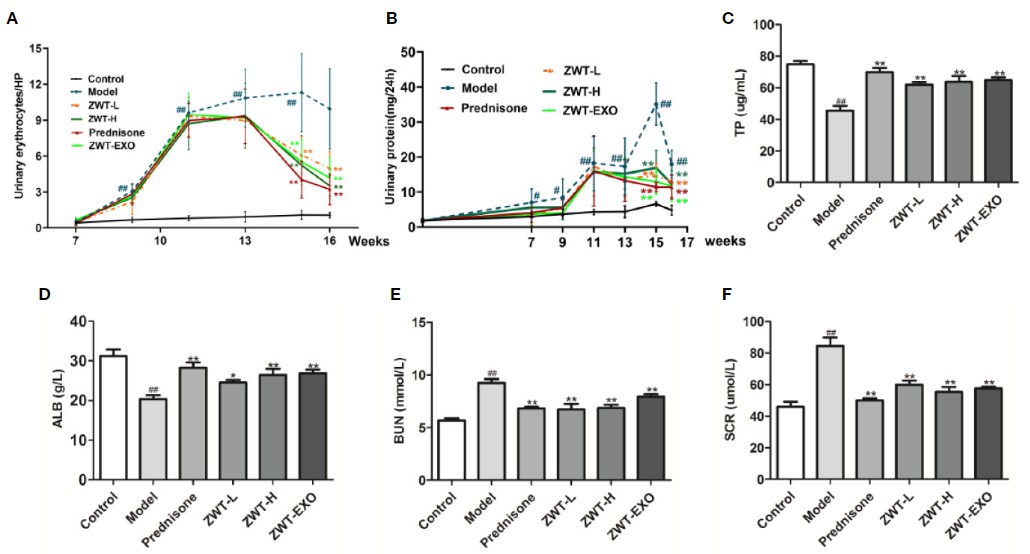IgA Nephropathy (IgAN) Model
Creative Bioarray offers a well-established IgA Nephropathy (IgAN) model induced by BSA/LPS/CCl4 in both rats and mice. This model is designed for the screening, testing, and evaluation of new drugs and formulations. It has been meticulously developed to closely mimic the pathophysiology of human IgAN, providing a reliable platform for researchers and pharmaceutical companies to evaluate the efficacy and safety of potential therapeutic agents.
IgAN is a progressive, rare kidney disease and a leading cause of chronic kidney disease and kidney failure. Annually, approximately 25 individuals per million worldwide receive a new diagnosis of IgAN. Despite being the most common form of primary glomerulonephritis (GN) and having been initially described over 50 years ago, our understanding of the disease's pathophysiology remains incomplete, and treatment approaches have largely been empirical. Consequently, the development of preclinical animal models of IgAN is crucial for advancing our knowledge of the disease. These models provide a vital platform for researchers to study the mechanisms of IgAN, test potential therapies, and ultimately improve treatment outcomes for patients affected by this condition.
Our IgA Nephropathy (IgAN) Model
- Available Animal
- Rat
- Mouse
- Modeling Method
To induce the IgAN model, animals undergo a series of procedures, including intragastric administration of bovine serum albumin (BSA), tail vein injection of lipopolysaccharide (LPS), and subcutaneous injection of carbon tetrachloride (CCl4). This combination of treatments is designed to replicate the pathophysiological features of IgAN, providing a reliable model for studying the disease and evaluating potential therapies.
- Endpoints
- Serum analysis: BUN, creatinine, albumin
- Histology analysis: H&E staining, PAS staining, Immunofluorescence
- Urine protein analysis
- qPCR or Western Blot
- Other customized endpoints
Example Data
 Fig. 1 ZWT-EXO improved renal function of immunoglobulin A nephropathy (IgAN) rats. (A) 24-h urine protein of the IgAN rats in the different periods. (B) Urinary erythrocyte numbers at high power field of the IgAN rats in the different periods. (C–F) The content of total protein (TP), albumin (ALB), blood urea nitrogen (BUN), and serum creatinine (SCR) in the serum of IgAN rats. All values were presented as mean ± SD. #P < 0.05, ## P < 0.01, compared with control group; *P < 0.05, **P < 0.01, compared with lipopolysaccharide (LPS) group. (Li et al. 2020)
Fig. 1 ZWT-EXO improved renal function of immunoglobulin A nephropathy (IgAN) rats. (A) 24-h urine protein of the IgAN rats in the different periods. (B) Urinary erythrocyte numbers at high power field of the IgAN rats in the different periods. (C–F) The content of total protein (TP), albumin (ALB), blood urea nitrogen (BUN), and serum creatinine (SCR) in the serum of IgAN rats. All values were presented as mean ± SD. #P < 0.05, ## P < 0.01, compared with control group; *P < 0.05, **P < 0.01, compared with lipopolysaccharide (LPS) group. (Li et al. 2020)
Quotation and Ordering
Creative Bioarray offers an extensive collection of well-characterized urological system disease models to our clients, designed to expedite their drug development processes. These models are meticulously developed and validated to closely mimic human urological conditions, enabling researchers to effectively study disease mechanisms, evaluate potential therapies, and optimize drug candidates. If you are interested in our services, please feel free to contact us at any time or submit an inquiry to us directly.
Reference
- Li, H., et al. Zhen-Wu-Tang protects IgA nephropathy in rats by regulating exosomes to inhibit NF-κB/NLRP3 pathway. Frontiers in Pharmacology, 2020, 11: 1080.